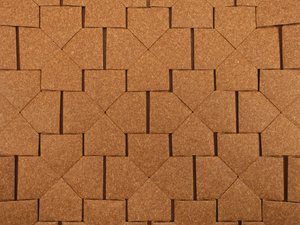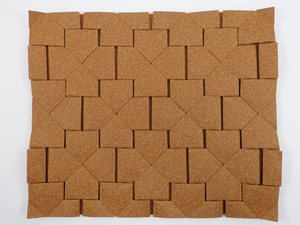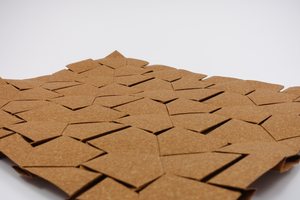Greek Cross Flagstone Tessellation





This origami tessellation was inspired by a pavement pattern I noticed some time ago in my home city of Lublin, Poland, at the old cemetery and in the open-air museum. I must credit Robin Scholz for the inspiration to take a closer look at patterns I see on floors and ceilings wherever I go. Robin himself also recently published pictures of a similar pattern.
It took me more than half a year until I could find the time to get this model to its final form, i.e. design the precrease pattern for a clean fold (without showing fragments of the grid) and then to actually fold it. This model is tricky since when you look at a single cross, it has a 90° symmetry. However, the pattern as a whole does not have such a symmetry, only 180° symmetry. As you see, the crosses are arranged in rows, and rotating the whole pattern by 90° does not result in the same pattern as in the beginning. This means that a single cross has the 90° symmetry, but the tessellation molecule does not since it contains not just one cross, but a cross and fragments of its neighbors. This surprising symmetry is visible in the most striking way on the back side. Such untypical symmetry confused me at first since when I was trying to reproduce this pattern in origami, I tried to give it a 90° symmetry, which was bound to fail. Only after I realized the difference between a single cross and a complete molecule, could I proceed with the design. I think this is the first time I ran into such a situation. I find it very interesting and probably there are more patterns like this to explore.
Seen at an angle, the model actually looks like flagstones in a paved path. You can also see how thick this tessellation is despite there being only few layers of paper: the twists that separate individual crosses from each other are quite springy and with stiff paper, they give the model a lot of body. Strictly speaking, this model is not a pure flagstone tessellation since there are some single pleats (on the crosses). This is unavoidable for shapes with reflex angles, such as the crosses here, so my way of looking at it is to call this a flagstone tessellation in the sense that the crosses form a flagstone, and the single pleats on the crosses don’t count since they are just a way of constructing those polygons with reflex angles.
The back side of the model highlights the symmetry of the molecule: while a single cross seen on the front side has a 90° rotation symmetry, the molecule has only 180° symmetry due to the way the crosses are laid out on the plane and how molecules have to connect to each other.
One of the pictures shows the sheet of Khepera paper from which the model was folded, precreased and ready to collapse. I prefer to precrease my models without folding the whole grid. It takes more time this way, but results in a much better looking model.
I folded this model from Khepera paper, one of my favorites for models like this, and wrote a review of the paper.
I call this kind of models pseudo-flagstones. They are not real flagstones, but if you imagined the tessellation as consisting of concave polygons (in this case: crosses), they would be. Imagine the edges separated by non-symmetric pleats (whose existence prevents the model from being a real flagstone) as not being there and merely allowing several convex shapes to combine into a concave shape.
Comments